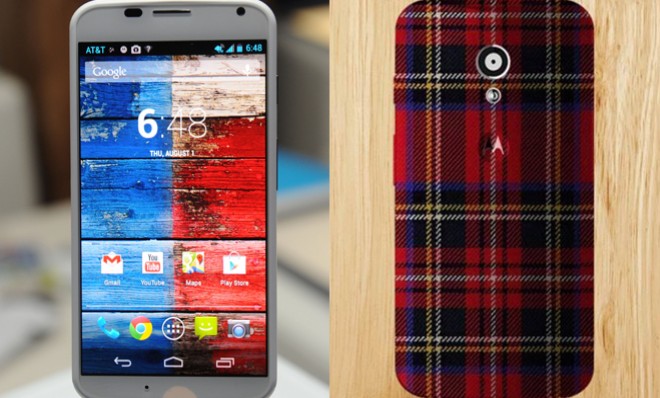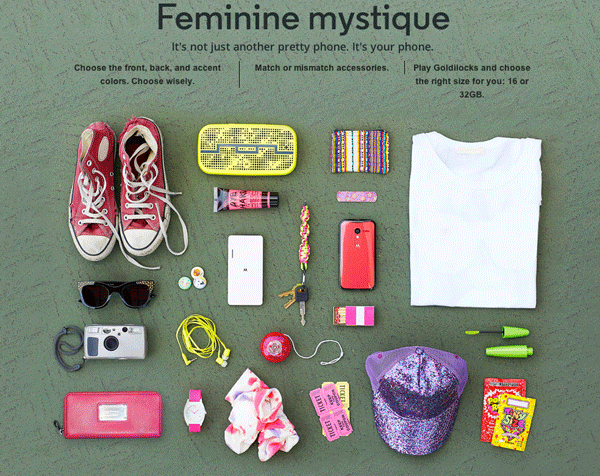The Moto X: Finally, an Android for humans
The Google Phone doesn't dazzle, and that's what's great about it

On Thursday afternoon in Manhattan, a small cast of Motorola executives formally unveiled an unassuming, 4.7-inch piece of rectangular plastic that we've actually known about for months: The Moto X.
At first glance, the mythical "Google Phone" isn't so different from many of the other top-caliber smartphones; one could even make an argument that it's inferior to premier Androids, particularly Samsung's Galaxy S4 or the HTC One, at least from a hardware perspective.
Its modesty is an odd gamble, considering it's the first Motorola phone built under Google's stewardship since the latter purchased the former two years ago for $12.5 billion. Even odder is how the phone seems to bask in just how truly unremarkable it is: It doesn't have the biggest screen or the fastest processors; its internal speakers aren't endorsed by Dr. Dre; its camera isn't close to as powerful as the one on, say, the Nokia Lumia 1020; and its shiny, plastic chassis is a far cry from the iPhone or One's pretty aluminum.
The Week
Escape your echo chamber. Get the facts behind the news, plus analysis from multiple perspectives.

Sign up for The Week's Free Newsletters
From our morning news briefing to a weekly Good News Newsletter, get the best of The Week delivered directly to your inbox.
From our morning news briefing to a weekly Good News Newsletter, get the best of The Week delivered directly to your inbox.
What it does offer is an apparently unvarnished version of stock Android (which is perhaps the best mobile operating system currently available), and the ability to customize its plastic back panel with a dazzling array of colors and design options — 2,000 different combinations, to be exact — including an especially rad one that uses real wood.
By essentially eschewing the spec sheet, Google and Motorola are deviating from what's long been modus operandi of Android, which, according to Pew Internet Research, has traditionally been favored by young males between 18 and 34. When you step back and look at the bigger picture, you get the sense that the Moto X is trying to banish the ghosts of Motorola's cold and mechanical "Droid" branding that's aggressively been pushed by Verizon for the good part of a decade.
That Google and Motorola are trying to stuff the past into a bottle and throw into the ocean isn't surprising. The don't-look-back message is being driven by the Moto X's insane $500 million marketing budget, which is about half of what Apple spends on marketing annually for all its products. The message is that the Google Phone is Droid's polar opposite: Friendly, warm, and inclusive. This isn't a phone for young dudes who can't wait to tell you why their phone is better than yours.
In fact, part of the ad campaign's proletarian backbone is that the Moto X is "made in the USA," tapping the same sentimental populism regularly evoked by Chevy trucks carrying bales of hay.
A free daily email with the biggest news stories of the day – and the best features from TheWeek.com
In that respect, the Moto X is merely an extension of Google's ongoing quest to become truly indispensable — whether that manifests itself as a searchable database of all the world's knowledge, or as a tiny plastic computer adorning your eyebrow.
But unlike past fumbles, the Moto X is evidence that Google is beginning to embrace an ethos that Steve Jobs long held: That in order for a piece of technology to get past its own technology-ness, you have to strip away the numbers and channel the elements that make it human.
It's why the Moto X is so deliberate in its appeal: You can talk to the phone without touching it, for example. It's why the Moto X's ad team is blatantly copying the designs of popular Tumblrs. And it's why they're quickly scrubbing "that's what she said" penis jokes when rightfully called out for it.

The Moto X — as your photo album, roadside sherpa, personal DJ, and direct portal to your loved ones — wants you to feel a deep sense of attachment to it, right from the moment it's delivered to your doorstep wearing your favorite color since childhood. In many ways, it's the first Android that actively tries to blend into the tricky compositional make-up of being human.
When Google CEO Larry Page announced his company would purchase Motorola Mobility two years ago, he promised the the move would "supercharge the Android ecosystem." That multi-billion-dollar phone, it turns out, is anything but super; the Moto X (and the variable is no accident) is blissfully ordinary, much like most of us.
-
 Political cartoons for December 20
Political cartoons for December 20Cartoons Saturday’s political cartoons include drowning rats, the ACA, and more
-
 5 fairly vain cartoons about Vanity Fair’s interviews with Susie Wiles
5 fairly vain cartoons about Vanity Fair’s interviews with Susie WilesCartoon Artists take on demolition derby, alcoholic personality, and more
-
 Joanna Trollope: novelist who had a No. 1 bestseller with The Rector’s Wife
Joanna Trollope: novelist who had a No. 1 bestseller with The Rector’s WifeIn the Spotlight Trollope found fame with intelligent novels about the dramas and dilemmas of modern women